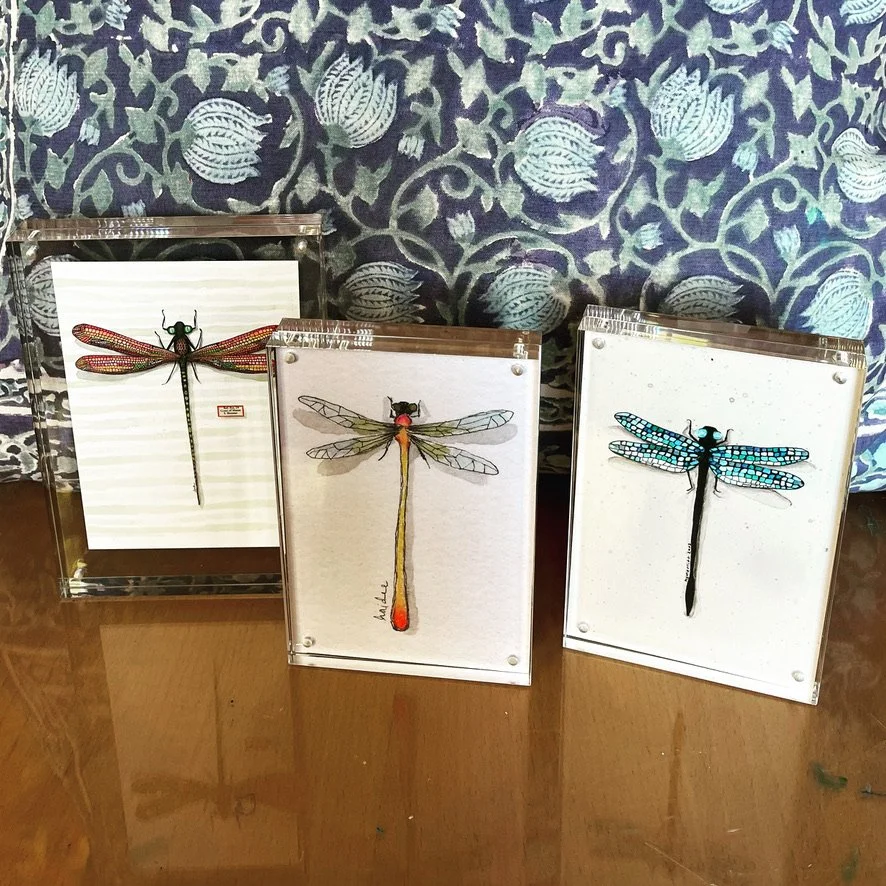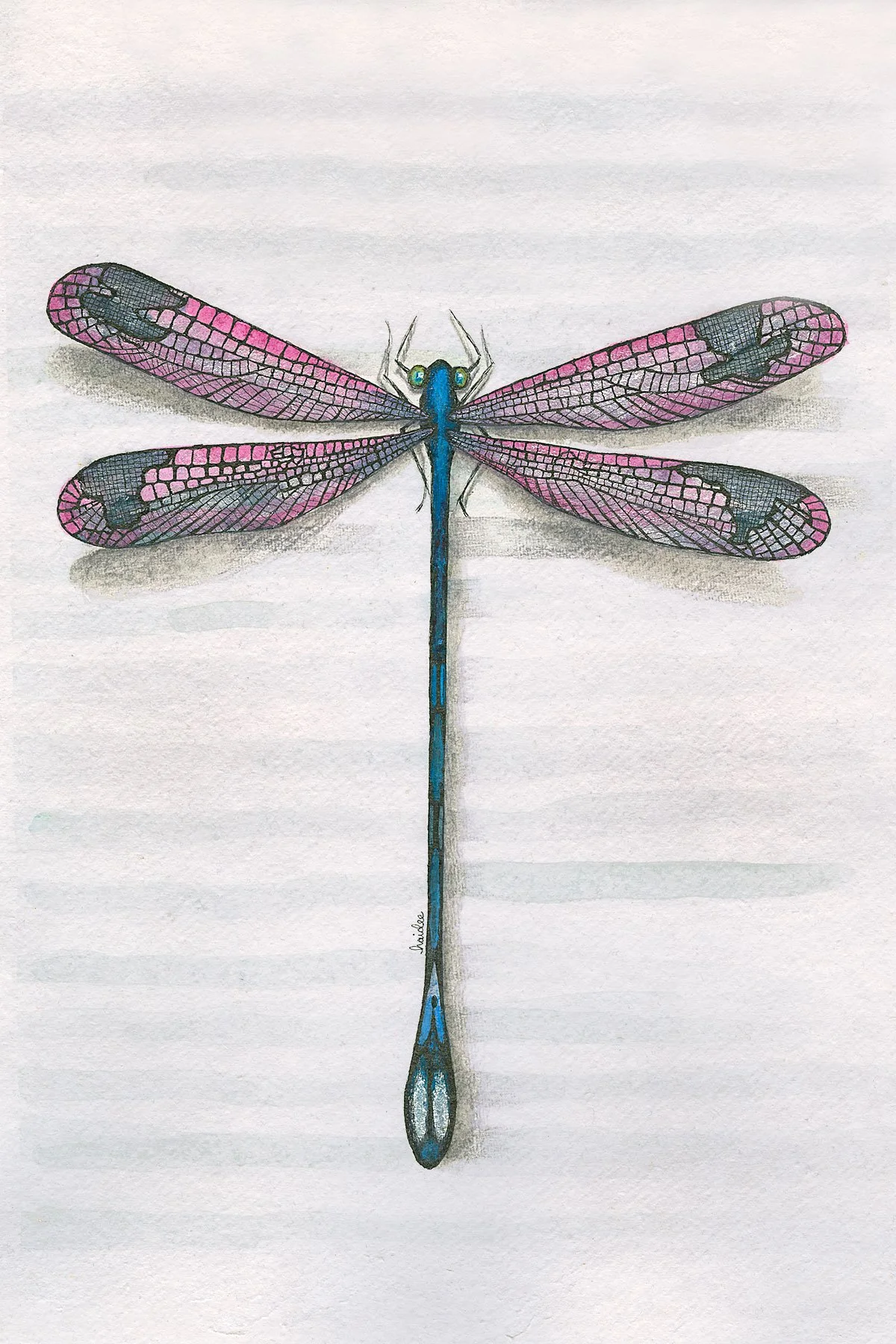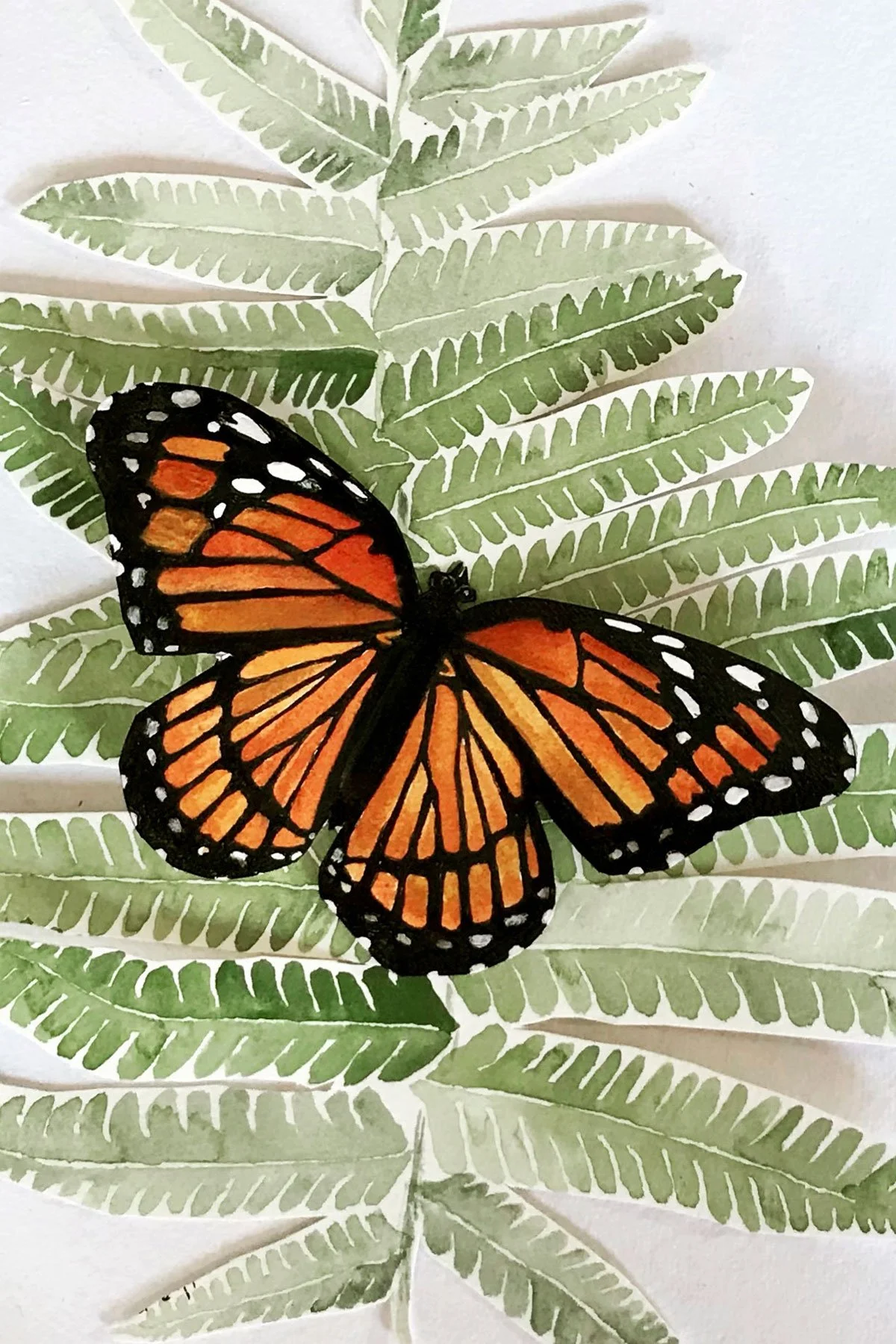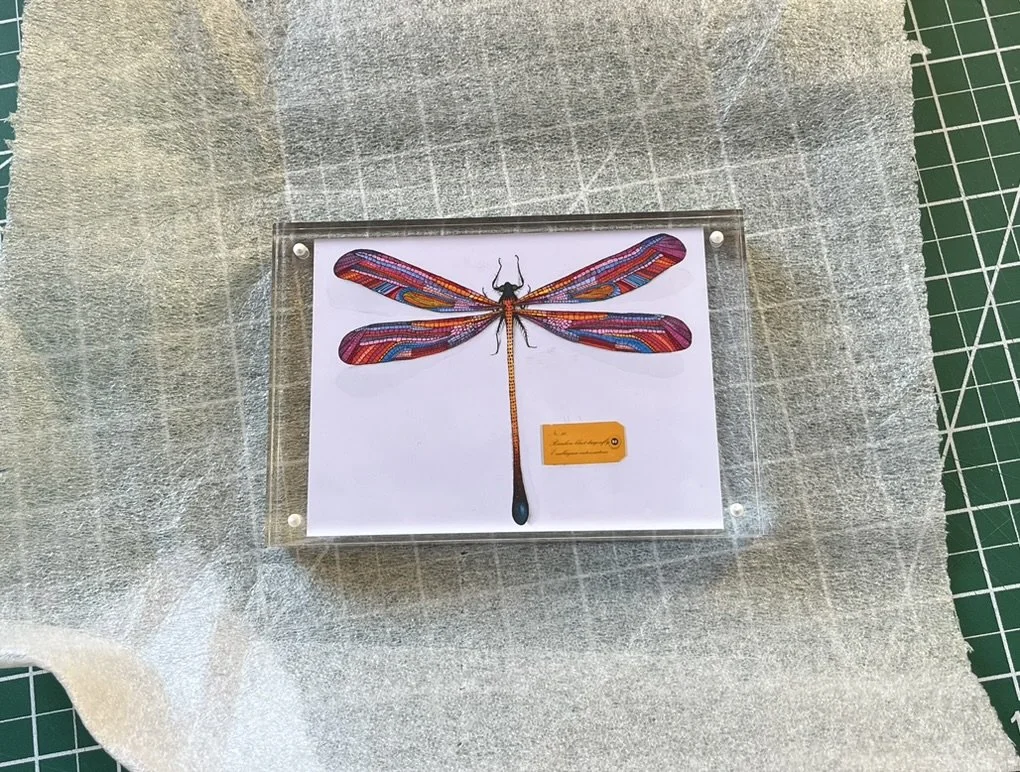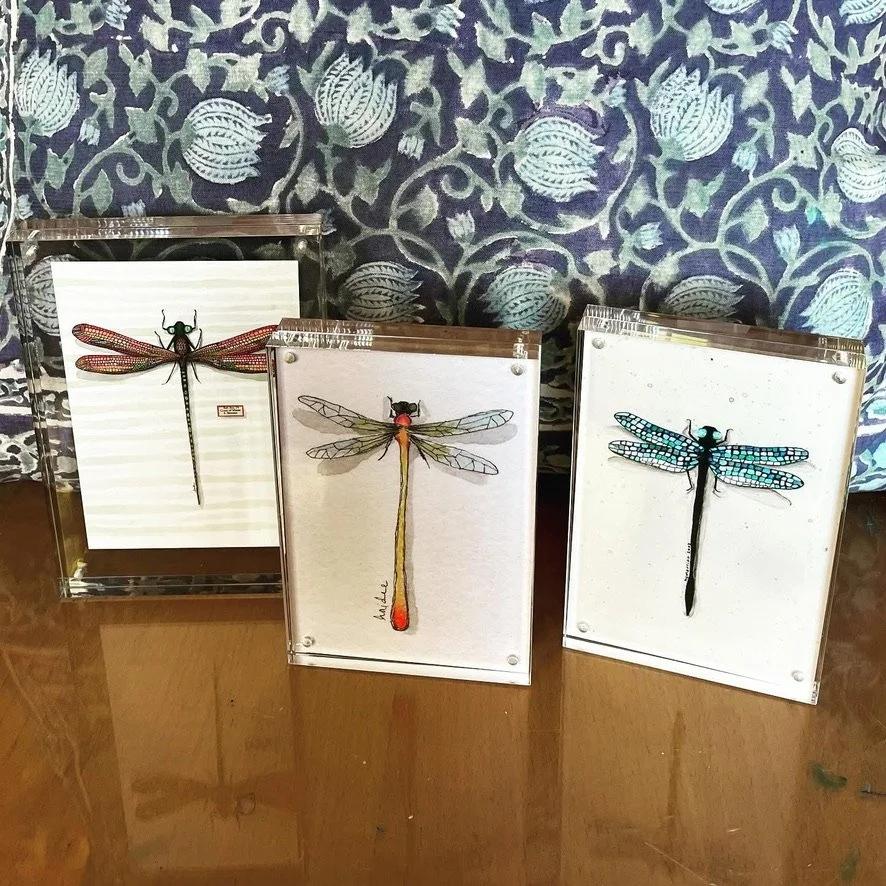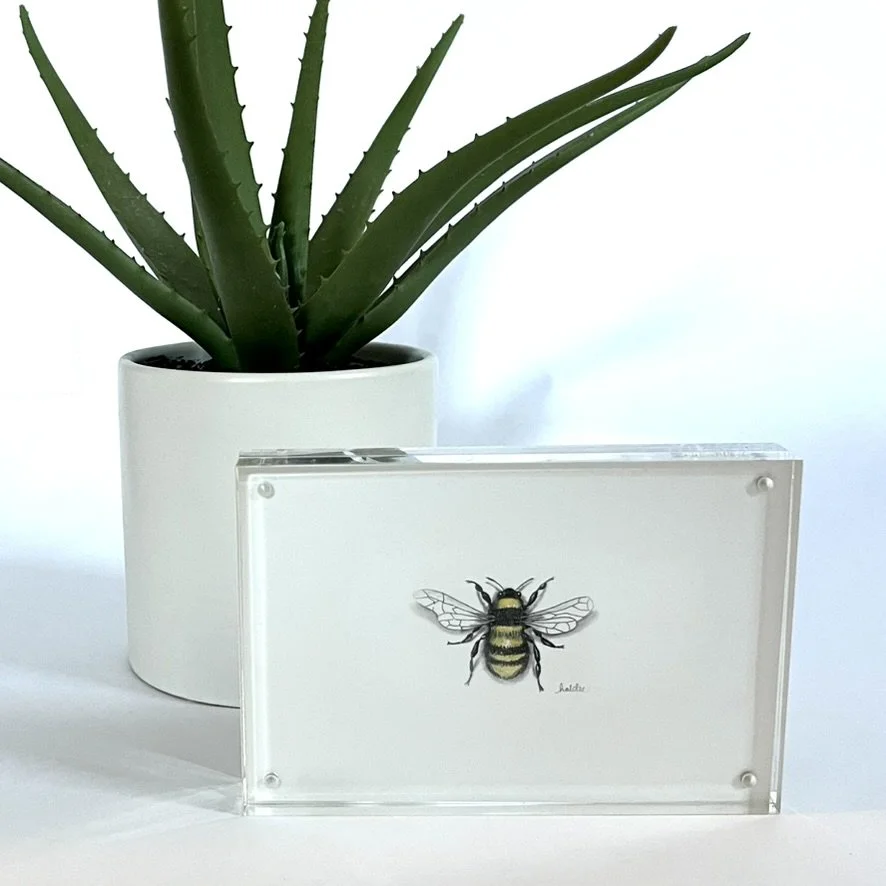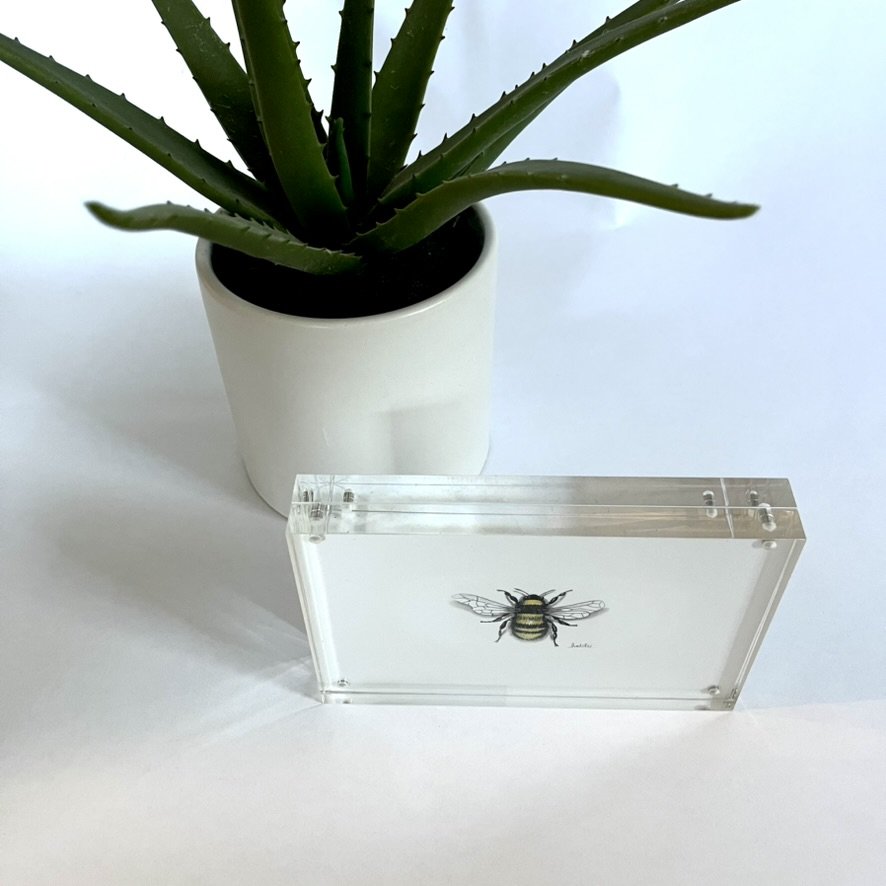Field Record – Unpublished Notes, Okada Archive, 1934
The Tasmaneura chloromela is a slender-bodied darner native to the myrtle beech understory of Tasmania’s inland Florentine Valley. First documented in situ by entomologist and botanical surveyor Haruto Okada in 1934, the species is known for its exceptionally narrow flight corridor—generally under 2 meters in altitude, following the braided creekbeds that run through low canopy beech and tree fern thickets. It is thought to prefer disturbed light gaps caused by occasional eucalyptus fall.
The wings are largely transparent, but along the leading edge of each forewing runs a muted band of bluish-green—a patinated, oxidized tone akin to aged copper or mineral-washed bronze. Unlike structural coloration seen in rainforest species, this effect is pigment-based, owing to a rare chloromelanin compound, unusually stable in preserved specimens. Wing venation is pale khaki with occasional iron-oxide speckling near the nodus. The pterostigma is offset and visibly asymmetrical—possibly an aerodynamic adaptation or evolutionary artifact.
The thorax carries a fine dusting of sage and ochre set against a soft black cuticle, offering low-reflectance camouflage in fern-shadowed habitats. Eyes are large, forward-set, and uniformly green tourmaline, with internal filtration better suited to low-angle diffuse light than direct sun. Field sketches by Okada indicate a behavioral preference for hovering near still pools in late morning—possibly linked to thermoregulation or prey concentration.
Only a single population has been formally recorded, and no larval stages have been observed in the wild or successfully reared in captivity. Its specific epithet, canebrakae, refers to the narrow zone of Gahnia grandis (saw sedge) along which the specimen was originally netted. Despite repeated field returns in 1937 and 1946, no further sightings have been verified, and the species is presently classified as “data deficient” in the Tasmanian Entonological Register
Note: High quality archival glicée print on acid-free paper, a method that creates fine art reproductions with exceptional color accuracy and longevity. Pigments-based inks are designed to resist fading and discoloration and capture the finest details and subtle color variations with great precision.
Housed in a 4×6” crystal-clear acrylic specimen block, its 1” depth allows freestanding display. Each piece is designed to exhibit on desk or shelf.
Fly Design uses a practice known as entonology — the study of fictitious insects — to reimagine the natural world through scientific storytelling and poetic design.


